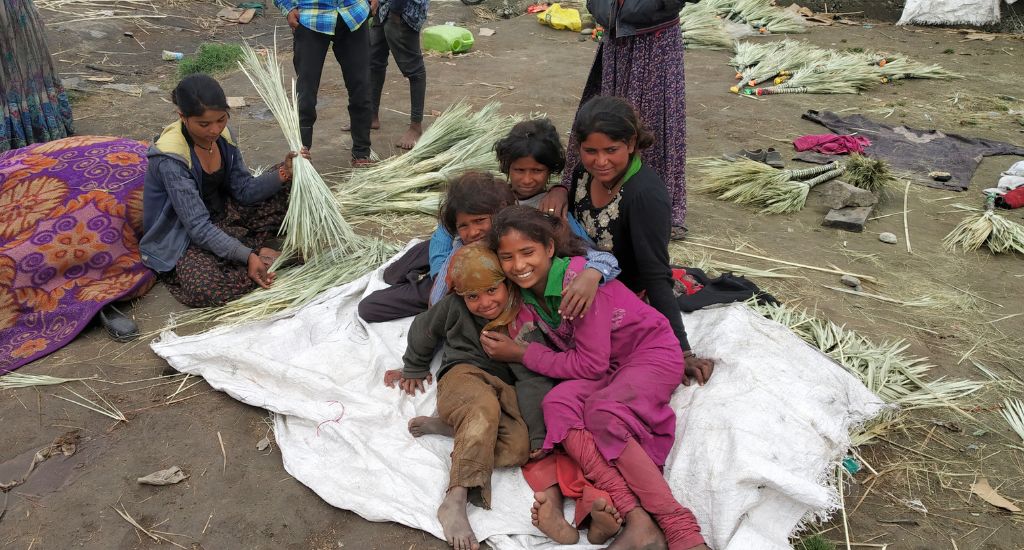
Why migrant labourers keep flocking to Kashmir
Undeterred by threats to their security, hundreds of migrant labourers from different states flock to Kashmir every spring to earn their livelihood.

Undeterred by threats to their security, hundreds of migrant labourers from different states flock to Kashmir every spring to earn their livelihood.
After a winter break, Raees-ud-Din is back in Kashmir, where he has been earning his livelihood since 2003. Raees, who hails from Araria district of Bihar, first came to Srinagar as a labourer when he was just 17. Later, he went to different districts in the Valley where he took up various jobs at different construction sites.
“I didn’t know anything about Kashmir when I came here. It was a strange place for me,” Raees said. “However, I quickly fell in love with this place because of the good weather here and the appreciation I received from people.”
Raees has worked in other states of India, but he found Kashmir the most alluring job location. At present, he is engaged in plastering the ceiling of a building in Anantnag district.
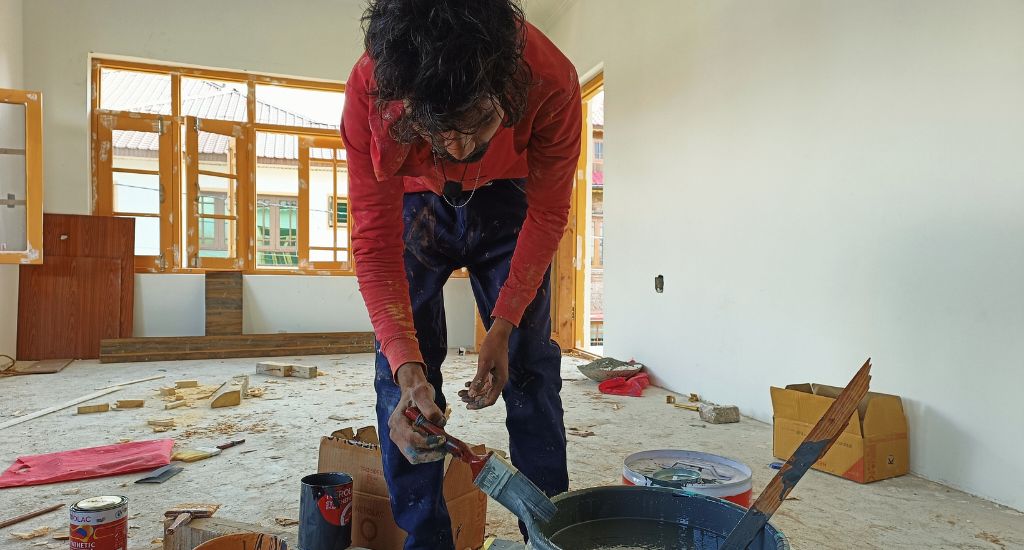
Like Raees, every year, according to rough estimates, around 400,000 migrant workers come to the Valley to earn their livelihood. These migrant workers are mostly associated with construction jobs, while some others take up work such as selling street food.
The migrant workers belong to villages in different states, especially Bihar and Uttar Pradesh. They come from different cultural backgrounds and speak different languages. They usually return to their native places before the beginning of the chilling winter season in Kashmir, with only a few staying back.
Sonu Bagaria, 22, has been selling brooms on the streets for five years. Every year his family comes to Kashmir from Rajasthan to make brooms and sell them in the local market.
“My family has been earning a livelihood here for years,” said Bagaria. “We get the price we deserve here.”
Bagaria’s family buys the material for making brooms in Rajasthan and brings it to Kashmir.
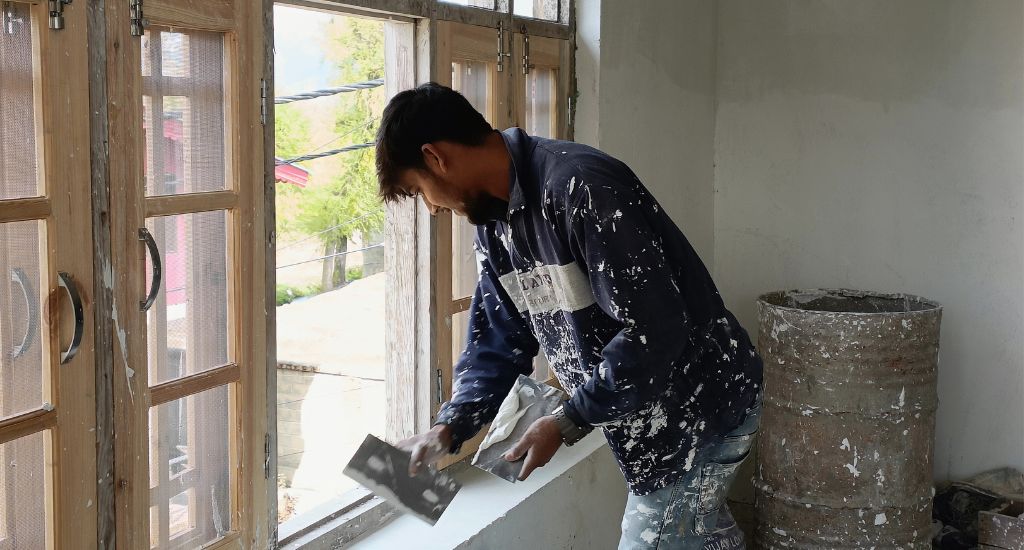
“We work here in summer months and return to Rajasthan in November,” he said.
Some of these migrant workers have been coming to Kashmir for over two decades and a few have even become well-known contractors in their area. They say Kashmir has become a second home for them.
Mujeeb-ul-Rehman, 35, came to Kashmir from Betiya district of Bihar in 2008. He began as a labourer, applying wall putty and painting buildings under construction. Now, he has become a well-known contractor in the area for these jobs.
Rehman, who presently has 15 people working under him, has been getting labourers from Bihar to Kashmir for eight years now.
“We know Kashmir isn’t a normal place like other states. But we earn good money here. Our work is recognised, we are paid on time and we are also provided food,” he said.
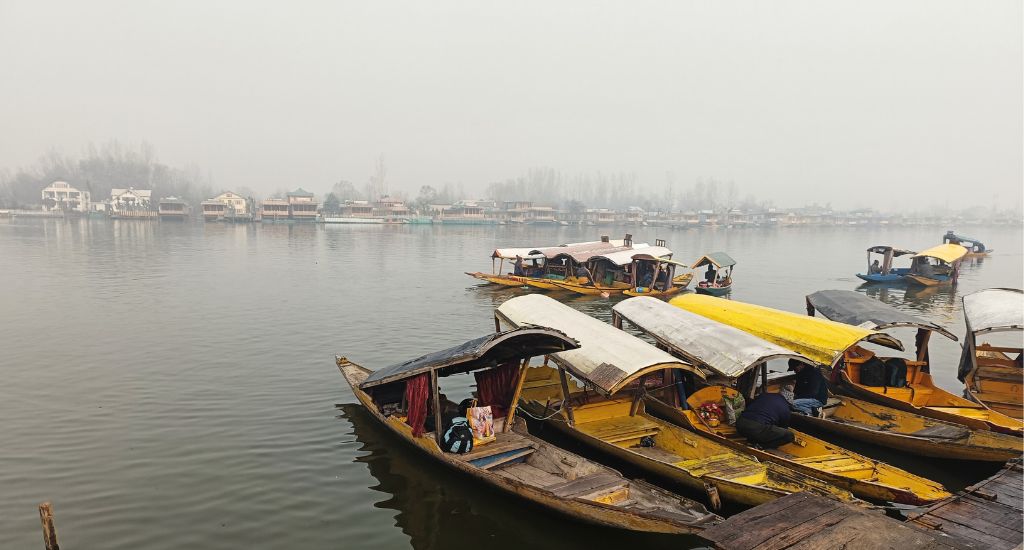
Imdad-Ul-Sheikh came to Kashmir in 2016. He is all praise for the place.
“Here, I earn double of what I earn in Bihar,” said Imdad.
Most workers continue to work in Kashmir despite the targeted attacks on non-locals in the Valley by militants. In 2019, according to the official data, militants targeted non-locals on at least 25 occasions, killing 19 workers and injuring 37 others.
The killings prompted government security forces to intensify anti-militancy operations, especially in the districts of Pulwama, Shopian and Kulgam.
The militant attacks have made many migrant workers return to their homes. However, most of them come back to the Valley after the fear subsides. They say Kashmir is a place they can’t afford to leave completely even if there is a prevailing threat to their security.
“We come to Kashmir to earn our livelihood,” said Bagaria. “Though we have witnessed many dangerous situations here, we have remained unharmed so far.”
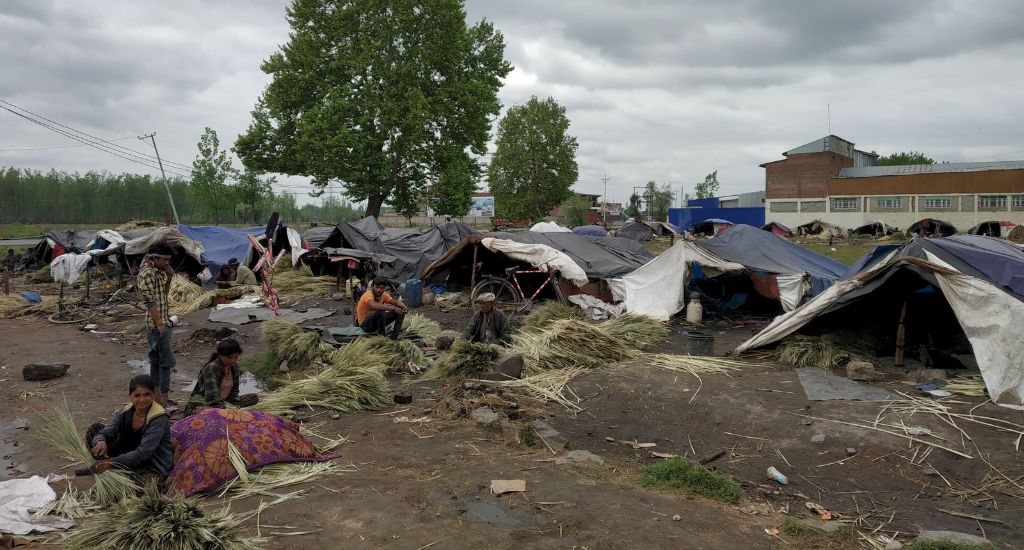
Nahar Samoon, a Christian worker from Gurdaspur, Punjab, has also seen many conflict situations in Kashmir, but he has never thought of leaving it.
“I have been coming to Kashmir for eight years now. I have seen strikes, stone pelting and encounters, but nobody has hurt me here,” Samoon said.
According to Raees, he has received help from the local people whenever any untoward incident has happened. In 2014, when floods inundated the region, a local resident gave him shelter.
“I was stuck in Srinagar. The local people not only rescued us but provided us food and gave us shelter until we left for home,” he said.
The lead image at the top shows kids of migrant workers enjoy a light moment outside their temporary shelter in Pulwama district (Image by Aamir Ali Bhat)
Aamir Ali Bhat is a journalist and independent researcher based in Kashmir. He writes on human rights violations, politics and the environment.